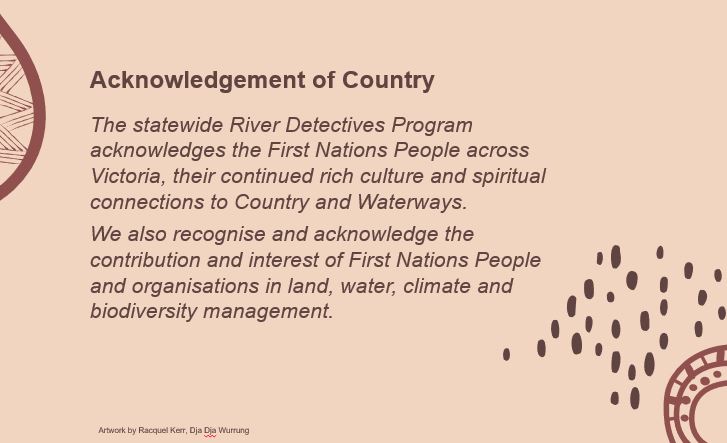Flora (plants)
Explore the importance of native vegetation for healthy waterways, catchments and native fauna
Smart Gardens For A Dry Climate booklet
Looking to establish a water-wise garden at your school or at home? There are plenty of good ideas in this booklet from Coliban Water.
|
Waterbirds and Farm Dams brochure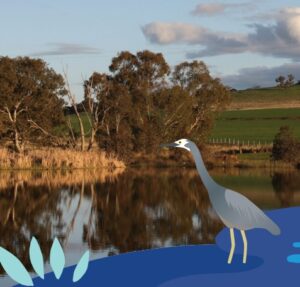
This guide can help landholders understand the habitat requirements of waterbirds to create or enhance a water body to attract native fauna. This has the added benefits of improving water quality and adding a valuable natural asset to the property.
|
Enhancing Farm Dams brochure
Farm dams can serve dual purposes as water supply for stock/households as well as important refuges for native fauna. Use this guide to learn how to enhance dams to conserve the ‘Magnificent Six’ – a group of threatened floodplain specialist fish on the brink of extinction in the southern Murray-Darling Basin. These species are southern pygmy perch, Yarra pygmy perch, southern purple-spotted gudgeon, Murray hardyhead, olive perchlet and flat-headed galaxias. Also see the resource, ‘Waterbirds and Farm Dams’ for creating habitat for waterbirds.
|
Wildlife of Native Grasslands on Victoria’s Northern Plains
Victoria’s Northern Plains grasslands support unique yet highly endangered and severely fragmented communities of plants and animals. Over the past 180 years, more than 99% of grasslands have been removed or substantially altered for agriculture. Learn about the creatures that rely on this important habitat and the plants and vegetation that support them. Head to fauna for videos about endangered Plains-wanderer birds.
|
Saving the endangered Plains-wanderer bird
Critically endangered and at risk of imminent extinction, the North Central CMA is working in partnership with Trust for Nature and Australia’s National Recovery Team for the Plains-wanderer. Find out more about Plains-wanderers by viewing these videos about these quirky creatures; of using song meters to monitor populations, Werribee Zoo’s captive breeding program, incubating Plains-wanderer eggs and this gorgeous footage of the first captive-bred chicks. A picture storybook has now been released with teacher notes and is a great way to engage young learners. You can also use this beautiful colouring sheet. To learn more about the unique habitat of the Plains-wanderer check out the brochures ‘Plants and Vegetation of Native Grasslands on Victoria’s Northern Plains’ and ‘Wildlife of Native Grasslands on Victoria’s Northern Plains’.
|
Indigenous Plant Use booklet
This booklet describes the medicinal, nutritional and technological uses of native plants found widely across the eastern Kulin Nation. The guide increases awareness of cultural plants although we suggest you seek advice from your local Traditional Owner group for specific information. The guide will help you design and establish a cultural garden with plant labels you can print, laminate and install.
|
Nature Guides of Central Victoria
These user-friendly field guides have been produced by Macedon Ranges Shire Council for easy identification of central Victorian insects, birds, flora, weeds and grasses. Hard copies may be available from the Shire.
|
A to Z Creature Feature poster
From the Alpine Spiny Crayfish to the Zebrafish, Parks Victoria’s A-Z poster will help students learn about some of Victoria’s weird and wonderful plants and animals. For more information about the places where they are found head to the Parks Victoria website.
|
Trentham Golf Course benefits from A Healthy Coliban Catchment video
The Trentham Golf Club is keen to make a difference to their local environment, and the Healthy Coliban Catchment project is helping them achieve it. A great example of how waterways are integral to community life and we are all responsible for their health.
|
Landholders banding together for a healthier Coliban Catchment
A group of Drummond landholders are working together to help improve Kangaroo Creek, as part of the North Central CMA’s ‘A Healthy Coliban Catchment’ project. The project is working with locals to improve water quality and biodiversity of a catchment that provides drinking water for 130,000 people.
|
Nature-scrolling activity
A nature scroll is simply a long, narrow piece of paper used to record your responses to nature, in words and pictures. It can be a portable, bite-sized alternative to nature journalling and a wonderful way for your students to engage with their local environment or make observations whilst at your adopted water testing site. Make it scientific, make it artistic or both !
|
The Riparian Revegetator video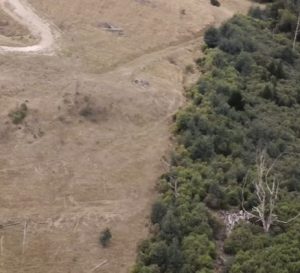
The riparian zone is the area between the land and a river or creek. Plants that thrive in this zone are known as riparian vegetation. The Riparian Revegetator tells the story of how, over the last three decades, Paul has transformed his land in Gippsland from a degraded and barren farm into a thriving environment, acting as a critical refuge for the local beasties. This is a great example of what landholders can achieve to enhance the health of waterways
|
Linking the Landscape – The Cobaw Biolink video
This video by Newham Landcare promotes the important role of the Cobaw Biolink in enhancing the connections between Mount Macedon and the Cobaw Range on both private and public land. Protecting existing high quality vegetation and creating connectivity in the biolink will help native plants and animals adapt to climate change. The video aims to engage the community and make them aware that their contribution, no matter how big or small, can have a positive impact on the environment on a landscape scale, making catchments and waterways healthier and everything that relies on them.
|
Annual Environmental/Cultural Celebration Dates
Schools and the community are invited to recognise and celebrate significant environmental / cultural days each year; some are regional, some national and some international. Many of these days tie in perfectly with the ethos of the River Detectives program and provide valuable opportunities to broaden/deepen environmental learning and encourage your students to advocate on a range of environmental and cultural issues. Check out this calendar (embedded with loads of links) and go wild !!
|
Cultural Fire and Healing Yorta Yorta Country video
Listen to Yorta Yorta man Ralph Hume discuss cultural fire and healing country at the 2019 National Indigenous Fire Workshop near Dhungala (Murray River), Victoria, Yorta Yorta Woka (Yorta Yorta Country). A very interesting insight into how the landscape has changed since European settlement, why the riparian environment we see today is not considered healthy by traditional owners and how it can be healed.
|
Weaving activity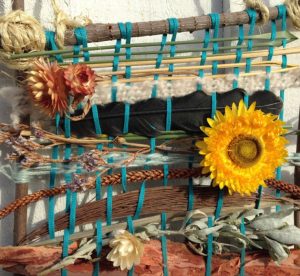
Use natural items found at your local waterway or bushland, in your school yard or home garden to make a weaving like the one pictured at the link above. Hang it somewhere special to connect you with nature.
|
What’s In Your Habitat ? activity sheet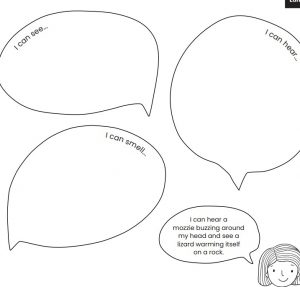
Use this simple template to challenge students to sit quietly outside and record what they see, hear and smell using words/sketches.
|
Nature Journalling activity
Be inspired by this video by central Victorian Trace Balla and start recording the things you see, hear, touch and smell at your local waterway or anywhere in nature. You can also access her Nature Journalling for Little Ones video or Nature Journalling for Teens video. Journal throughout a year and record the seasonal changes you observe. This ideas sheet from Paperbark Writer will help get you started too !
|
Mandala Art
Making a nature mandala is a great activity to tune into the colours, shapes and textures of natural objects at your waterway. Collect some treasures, plan a design and create a masterpiece. Ideally, this is done by the waterway where collected materials can stay on site. If collecting from your waterway and completing the activity back at school, try to return the materials later. Extension: find objects in nature that are mandalas in themselves. See this article for examples.
|
Seasonal Calendars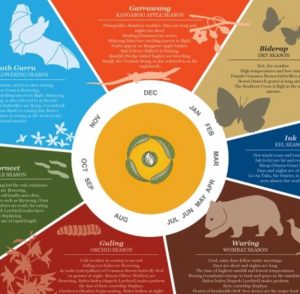
Aboriginal people traditionally lived by seasonal calendars not dictated by the conventions of summer, autumn, winter and spring but by the changes they observed in nature throughout a year. This is one example of a Kulin Nation seasonal calendar. You might be able to source one that is more specific to the traditional owners of your area ? Click here for an outline of the Wotjobaluk seasonal calendar for the Wimmera-Mallee area or view another version at the Visit Grampians website. Click here to watch a video about Dja Dja Wurrung seasons. Keep observations of your waterway and local catchment throughout a year with your students and make your own text or pictorial calendar inspired by a traditional seasonal version or this riparian/agricultural example from the North Central CMA. . . . .or combine the two !
|
Edithvale-Seaford Wetland video series
These six educational videos focus on the Edithvale-Seaford Wetlands in the Melbourne Water area, exploring their fauna and flora, rich history, role in providing drainage, and the community groups who play a key role in caring for them. Get a well-rounded understanding of the wetland’s many diverse roles, by watching the full video series: Animals of the wetland Birds of the wetland Drainage story of the wetland Friends of the wetlands History of the wetland Plants of the wetland
|
Backyard Buddies website
If you are looking to find out more about the native fauna and flora at your waterway, home, school, etc this website is a great place to start. ‘Explore‘ your own piece of wilderness by reading profiles about native birds, bugs/insects, mammals, frogs, reptiles and some plant families. Get busy with a project and ‘Create‘ buddy habitats for birds, bugs/insects, mammals, frogs, reptiles and plants. Use the tips to ‘Help‘ a backyard buddy.
|
Plants of the Wetland video
Learn why plants are important to a wetland, and how some were used by indigenous people for food, fibre and medicine. Filmed at the Edithvale-Seaford wetlands where there are 87 plant species with records of Aboriginal use, this is a great video for students in any region to understand the role wetland plants play. This is one of six educational wetlands videos featuring the Edithvale-Seaford Wetlands.
|
Garden Habitats for Small Aussie Birds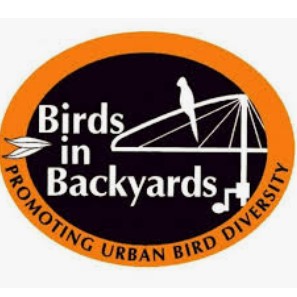
This video highlights suitable plants for three groups of small Australian birds; small honeyeaters, small insect-eaters and small seed-eaters. Boosting bird habitat at home, at school, at your River Detectives test site or in your local community is a great project to help our native feathered friends. You may even be able to attract grant funding !
|
Ten ways to improve the natural assets on a farm
Sustainable Farms is delighted to launch a new booklet, Ten ways to improve the natural assets on a farm. The booklet highlights ten discrete projects that landholders can undertake to improve the health of natural assets – such as dams, shelterbelts or riparian areas – on their properties. The Ten Ways booklet highlights how one small change on a farm could create new habitat for native animals and lead to increased stock productivity. And these changes don’t have to be onerous or expensive – simply fencing a paddock tree or rocky outcrop can help protect these sensitive assets for the future. This booklet, although written for adults, is a user-friendly guide for teachers and secondary students with information to inspire environmental action.
|
Geographic Concepts for a Floodplain and Catchment powerpoint slides
Want to know what some basic floodplain Geographic terms and concepts mean? Jeanie Clark from the Wimmera CMA put together the following three presentations to introduce the basic Geographic terms in a riverine landscape to teachers with little geographic training. Click on the links below to access each one. The slides could also be used with upper primary/secondary students. The Jeparit Showgrounds, Jeparit Primary School’s Waterwatch/ River Detectives site, was used as a local example to describe:
Jeanie is an ex-VCE Geography teacher and can be contacted through the Wimmera CMA for advice/support (time permitting).
|
Catchment/Waterway photos
These photos of catchments, healthy and threatened waterways, wetlands and rehabilitation strategies can be used as a springboard for discussion, in conjunction with lessons in the Waterways Environmental Education Resource (see Topics-Waterways) or with some of the activities on the Waterways activity matrix found under the Dive Deeper tab.
|
Environmental Water in Northern Victoria
Many of Victoria’s rivers and wetlands have been modified to provide water vital for farms, homes and industry. Water for the environment also benefits communities by improving conditions for fishing, camping and canoeing. Improved water quality can have economic benefits for irrigation and urban water supply. This map shows how water for the environment will help improve and protect plants and animals in northern Victoria in 2020-21.
|
Importance of the Ground Storey
This resource developed by Goulburn-Broken CMA highlights the importance of ground storey to native fauna and catchments. Ground storey is the layer of leaf litter and woody debris found on the ground and is often misunderstood as a mess or fire risk that must be cleaned up. This guide with stunning nature photography can be used as a series of fact sheets for teacher background or student research.
|
Richardson River’s Journey posters
These two posters are an excellent resource for staff and students to familiarise themselves with the Richardson River – it’s; source, path, reaches, catchment, major towns, history, most notable features, flora, fauna and users. The engaging format, stunning photos and user-friendly text makes it the perfect tool for teacher background, student-lead research and learning about an important waterway in the north central region.
|
Re-snagging posters
These two posters are invaluable to explain the importance of in-stream woody habitat to native fish and explains some of the important work that is taking place in the lower Loddon River and the Little Murray River as part of the north central CMA’s native fish recovery plan. Features include great photos, fact files, information and an excellent diagram outlining the threats and values in a waterway that impact on fish health.
|
Coliban River’s Journey poster
This poster is an excellent resource for staff and students to familiarise themselves with the Coliban River – it’s; source, path, catchment, major towns, history, most notable features, flora, fauna and users. The engaging format, stunning photos and user-friendly text makes it the perfect tool for teacher background, student-lead research and learning about an important waterway in the north central region.
|
Avoca River’s Journey posters
These three posters are an excellent resource for staff and students to familiarise themselves with the Avoca River – it’s; source, path, reaches, catchment, major towns, history, most notable features, flora, fauna and users. The engaging format, stunning photos and user-friendly text makes it the perfect tool for teacher background, student-lead research and learning about an important waterway in the north central region.
|
Loddon River’s Journey posters
These three posters are an excellent resource for staff and students to familiarise themselves with the Loddon River – it’s; source, path, reaches, catchment, major towns, history, most notable features, flora, fauna and users. The engaging format, stunning photos and user-friendly text makes it the perfect tool for teacher background, student-lead research and learning about an important waterway in the north central region.
|
Campaspe River’s Journey posters
These two posters are an excellent resource for staff and students to familiarise themselves with the Campaspe River – it’s; source, path, reaches, catchment, major towns, most notable features, flora, fauna and users. The engaging format, stunning photos and user-friendly text makes it the perfect tool for teacher background, student-lead research and learning about an important waterway in the north central region.
|
Habitat Survey Data Sheet
Use this data sheet on site or at school to record your habitat survey results. You can enter your habitat survey data online at the ‘Let’s Test and Record’ tab of this website.
|
Fish Need Trees poster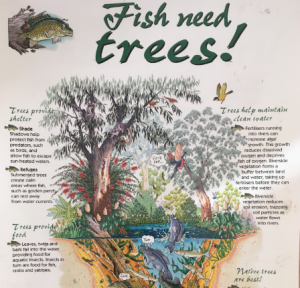
This beautiful graphic illustrates the variety of ways that fish use trees in and beside waterways and why it’s essential we retain and replace them.
|
River Detectives Field Manual
This is a copy of the Field Manual you receive a version of in your water quality test kit. If you lose your hard copy you can access it here. Be aware that this is the full manual – some pages may be irrelevant to you depending on the equipment you have and the region you are in.
|
Barwon River Planting Day video
Over 40 local recreational anglers braved wet and windy conditions in July 2019 to help revegetate the Barwon River. Thousands of native trees, shrubs and grasses were planted on the banks of the lower Barwon River near Marshall, south of Geelong, to return a one kilometre stretch of the river to its original woodland habitat. This is a great example of working together to improve fish habitat.
|
iNaturalist Citizen Science App Instructions
Instructions on how to download and use the iNaturalist app, developed by Corangamite CMA.
|
Wild Pollinator website
The Wild Pollinator Count gives you an opportunity to contribute to wild pollinator insect conservation in Australia. Twice a year (April and November) the community is invited to count wild pollinators in the local environment and help build a database on wild pollinator activity. You can join in by watching any flowering plant for just ten minutes sometime in the count weeks.
|
Woodend PS planting day video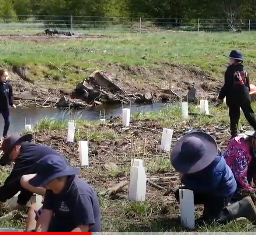
In October 2019, the NCCMA worked with Coliban Water and Dja Dja Wurrung to hold a planting day on the banks of the Campaspe River with Grade 4 students from Woodend Primary School. Students helped to plant some of the 20,000 native trees and shrubs, and learned about the positive impact the plants and fencing will have on water quality and catchment health.
|
Caring For The Campaspe project video
The Caring for the Campaspe project is the first large scale on-ground works project to deliver river health improvements for the Campaspe River from its headwaters near Ashbourne to the Murray River at Echuca. Since 2012, the North Central CMA has been providing fencing, offstream watering, weed control and revegetation incentives to interested land managers on both public and privately owned along the river’s length. This video is a great example of the great outcomes that can be achieved when passionate groups work together to improve river health.
|
In-Stream Habitat Poster
This poster is a fantastic resource to use during macroinvertebrate sampling sessions to demonstrate the five habitats that exist within a waterway; on the surface (surface zone), in open water (deep zone), amongst vegetation (reed zone), on rocks/logs/gravel (substrate zone) and amid the sediment (benthic zone). Use the links below to each quarter of the poster to print as A3, laminate and join for a class-size poster you can keep. Top left, top right, bottom left, bottom right Use the information on the reverse of the Waterbug Cards to have students place them in their correct habitat on the poster.
|
How Wolves Change Rivers video
When wolves were reintroduced to Yellowstone National Park in the United States after being absent nearly 70 years, the most remarkable changes occurred. Although this is an American example, this video is a powerful example of how everything in nature is inextricably linked and one change can cause a ripple effect, in this case called a ‘trophic cascade’.
|
Riparian Zone Poster
An excellent graphic to highlight the key features of a healthy riparian zone compared to a degraded riparian zone. Great for conversations about water quality, habitat health, land practices and shared community responsibility for the health of our waterways.
|
Barapa Barapa Field survey plant guide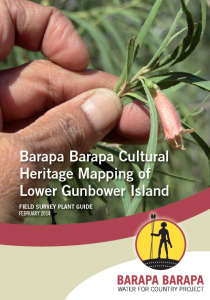
Find out more about plants in the Barapa Barapa region through pictures and descriptions of the plant, it’s habitat and it’s traditional uses.
|
Habitats near a waterway – fact sheet
Find out about the different habitats near and in a waterway and why they are important.
|
What is the riparian zone? – fact sheet
The riparian zone is any land that adjoins, directly influences, or is influenced by a body of water. Find out what the values, threats and management concerns are.
|

